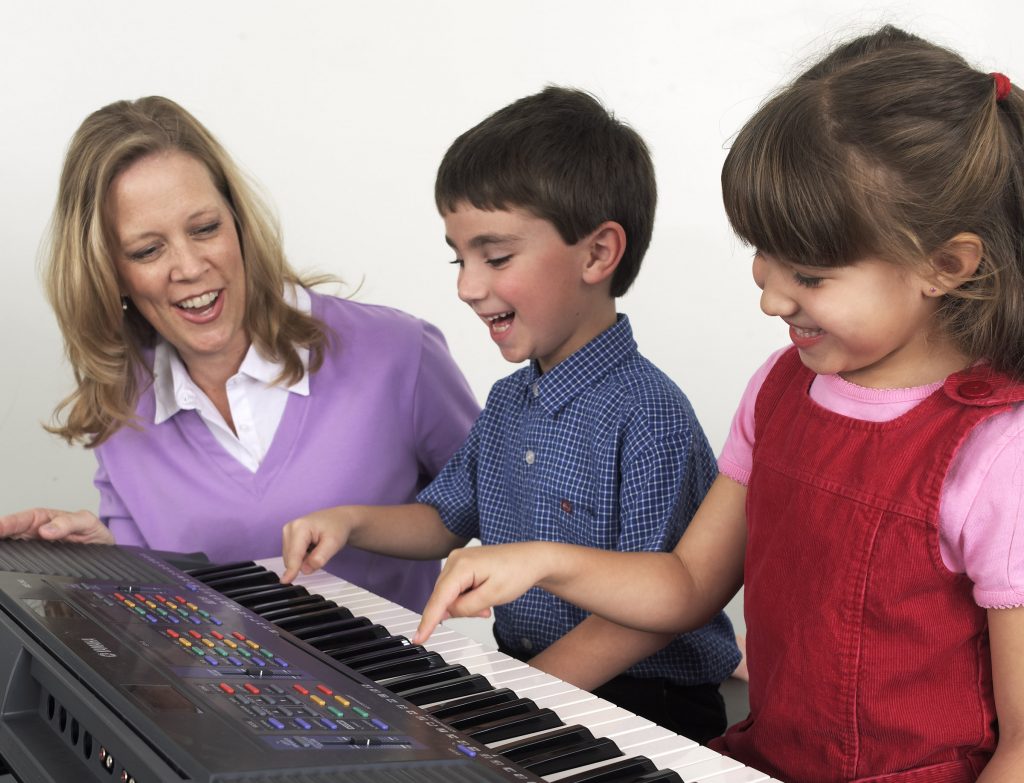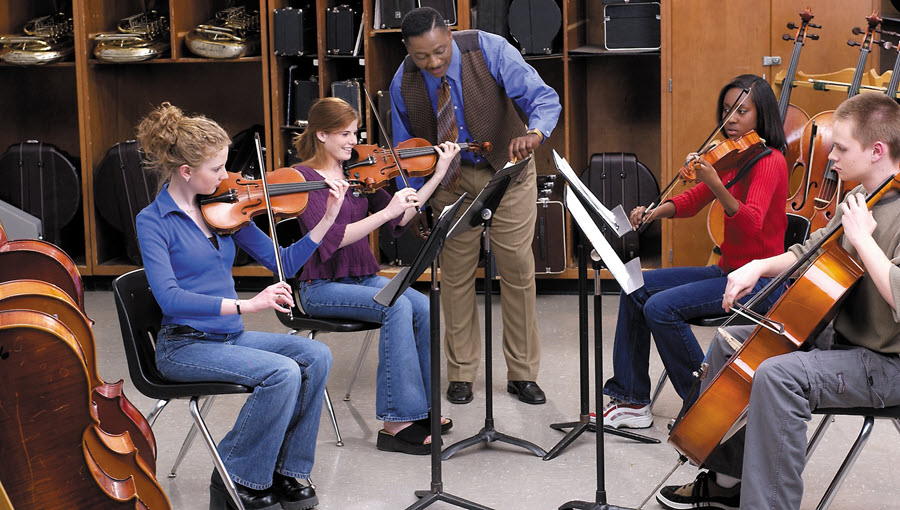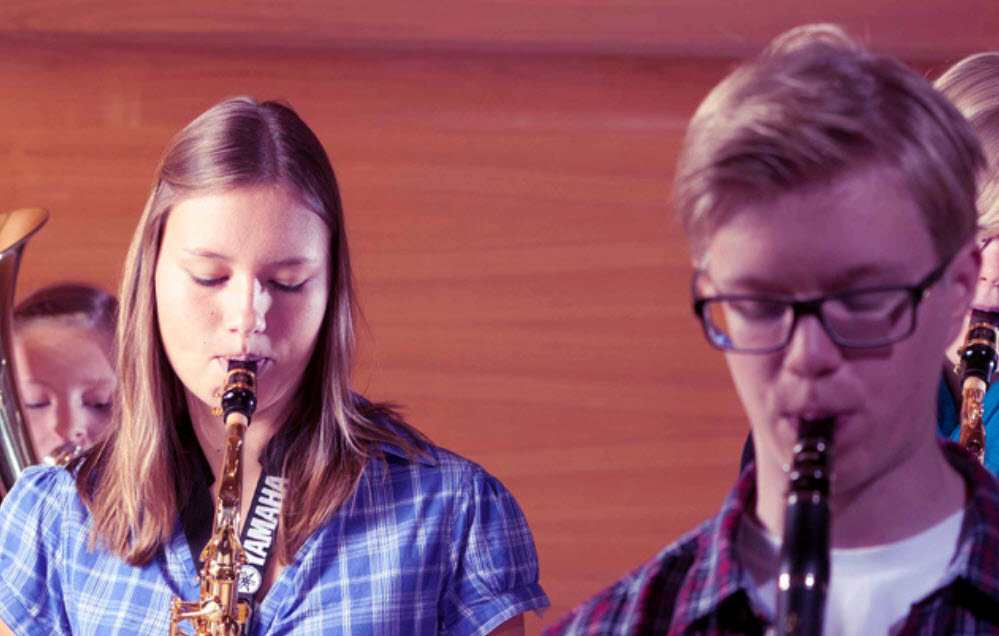So Your Child Wants to Play Brass
How to get your son or daughter started on trumpet, trombone, baritone horn or euphonium.
Your child has come home with information about joining the brass section in their school band, and they are excited about the prospect of being able to play trumpet, trombone, baritone horn or euphonium. That’s great, but many parents don’t have a musical background and don’t know where to start in order to give their son or daughter the best chance to succeed in this new creative adventure.
It that’s you, you’ve come to the right place! We’ll tell you what the most common brass instruments are, describe how to sort through the (sometimes) complicated language about them, and provide all the information you need to get started.
(Note: While this article covers the four brass instruments most commonly used in the classroom, it is possible that your child has set their eyes on other members of the brass family, such as French horn or tuba. If instruction in one of those instruments is offered by your child’s teacher or a private instructor, by all means encourage your child to go for it!)
Trumpet
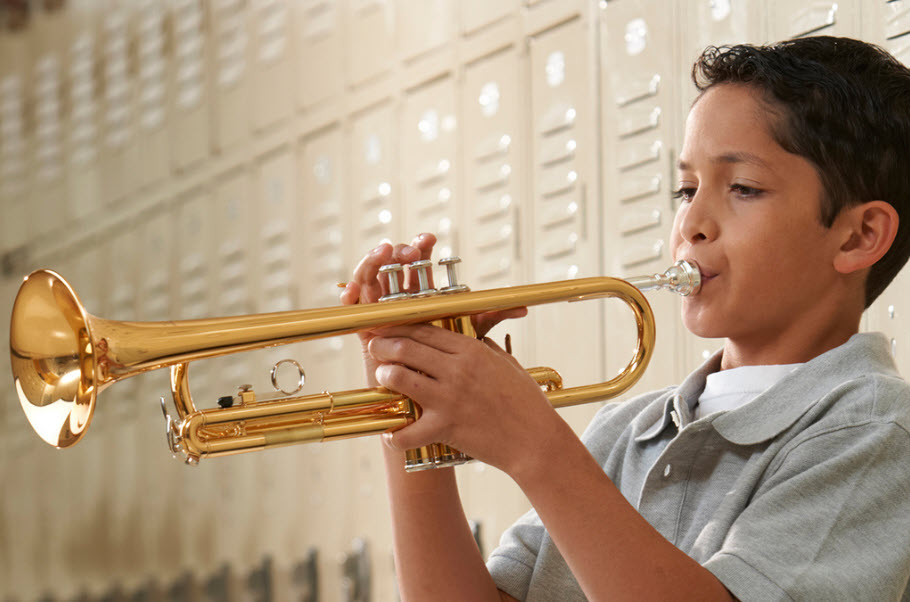
The trumpet is the highest pitched and most popular instrument in the brass family, popularized by masters of the instrument such as Louis Armstrong, Dizzy Gillespie and Miles Davis. They are a staple of orchestras, jazz bands, marching bands, concert bands and wind bands, and are often featured in film scores.
There are just two physical things needed to produce a sound on a trumpet: the body of the instrument and a detachable mouthpiece. The mouthpiece is what the trumpeter puts up to their mouth to make a sound by “buzzing” their lips. (The correct technique for doing so is called embouchure.) The body contains three valves to change the pitch, water keys (or “spit valves”) to relieve the condensation that collects while playing, and a flared bell at the end that directs the sound outwards.
Don’t worry too much initially about whether the trumpet you’re purchasing for your child is silver-plated or has a yellow brass exterior — this is something that won’t matter much for a beginner. What is important is that the instrument be durably made (preferably with tough metals like the monel alloys used in the Yamaha YTR-2330 Standard Trumpet) and that it can easily produce a clear, characteristic sound.
Most modern student trumpets are designed internally (in terms of the diameter of their internal tubing — something known as bore) so that beginning players can produce an immediate, rich and in-tune sound. When selecting an instrument, keep in mind that not all bores are made alike, so that trumpet that’s been sitting in your cousin’s closet since the ’90s may not be as easy to play as a newer option. Also, before leaving your dealer, make sure your child has the right valve oil so that when the instrument’s valves eventually stick (something that’s totally normal), you’ll have a way of dealing with it and can prevent future issues.
Trombone
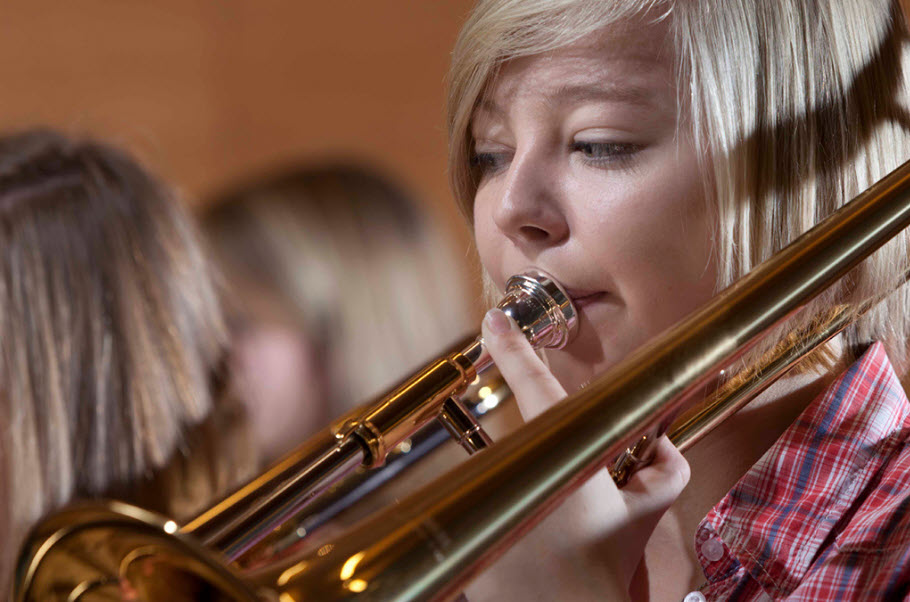
Easily recognized by its long, narrow slide and wide bell, the trombone is one of the most powerful instruments in the band. It has a big, bright sound and is found in almost every type of musical ensemble: symphony orchestra, jazz band, marching band, concert band and wind band.
The following three components are found inside most trombone cases:
- The mouthpiece. This is a silver metal cup with an attached tube that connects to the receiver of the instrument. The trombonist uses this to create the sound by “buzzing” their lips with the correct embouchure.
- The slide. This two-piece mechanism allows the trombonist to change their pitch. Note that this should be locked in place before picking it up out of the case to prevent any mishaps!
- The bell, bell tube, and tuning slide. This “other half” of the trombone connects to the slide and translates the air coming from the mouthpiece into the trombone’s characteristically “brassy” sound.
As with the trumpet, it is of little significance initially whether the trombone has a silver or yellow brass finish. The most important factor is that the young player should have the best chance to create a good sound by using an instrument made of quality materials. For example, the nickel-silver on the Yamaha YSL-354 Standard Trombone can prevent the inner slide from developing dents that the trombonist will feel every time they move the slide.
One important note regarding trombone: Because it uses a slide instead of keys or valves, even the beginner needs to have a good sense of pitch. If your child is able to sing, hum or whistle a tune by themselves, he or she is probably are a good candidate for this instrument. Knowing whether or not they have this ability in advance can save a lot of frustration for a budding young trombonist who is unable to “hear” a pitch before they play it.
Euphonium/Baritone Horn

The euphonium and baritone horn are related instruments and are often used interchangeably in the beginning band classroom. The main difference between these instruments are their bore sizes. The euphonium’s bore gets gradually bigger from the mouthpiece to the bell, while the baritone’s bore maintains a consistent size throughout most of the instrument, giving it a brighter sound than the euphonium.
Both instruments have three or four valves, and similar to the trumpet, the only thing that needs to be “put together” is attaching the mouthpiece to the receiver. Don’t worry about the number of valves or if the instrument has extra tubing to adjust for the tendency of the low register to be somewhat sharp (something called compensating) — that won’t become a factor for several years into your child’s musical development.
These instruments come with both upright and forward-facing bells (an example of the latter is the Yamaha YEP-211 Standard Euphonium), but for the purposes of the beginner the way the bell faces won’t make much of a difference. And similar to the trumpet and trombone, the finish — whether silver-plated or yellow gold lacquer — won’t be a recognizable determinant in sound from the get-go.
The most important factors to consider when starting on euphonium or baritone is that the student be able to produce a clear, characteristically rich sound and that when the instrument comes out of the case, it will work. This often means that the old euphonium in the back of the band room’s instrument closet is going to feel different than a newer instrument, and might require more time and effort to make it suitable for a beginner.
One last thing: Playing low-pitched brass instruments like euphonium and baritone horn requires a tremendous amount of breath support. Encourage your child to endure the initial feeling of having to literally “work” to get a big sound. In time, they will build this skill and set the tone for the rest of the ensemble.
Whether your child is interested in trumpet, trombone, or baritone horn/euphonium, we encourage beginning brass students and their parents to take advantage of their local music resources, such as their local authorized Yamaha dealer. These folks are experts in making sure that your child is prepared for their first day of band (or orchestra) and can even connect you with instructors if your child wants to get a running start on their musicality.
Check out these related blog articles:
A Guide to Parent Resources for Beginning Band and Orchestra
What’s the Difference Between a Trumpet and a Cornet?
Six Things You Never Knew About Trombone
How to Keep Brass Instruments Clean … Inside and Out
Click here for more information about renting a band instrument, and band in general.
Click here for more information about school music.
Click here for more information on the Yamaha YTR-2330 Standard Trumpet.
Click here for more information on the Yamaha YSL-354 Standard Trombone.
Click here for more information on the Yamaha YEP-211 Standard Euphonium.
Click here to locate your local authorized Yamaha dealer.











